What is link building and how does it work?
Link building plays a vital role in SEO. It increases website authority, impacts rankings and helps you build an online reputation and brand awareness. In this guide, we’ll dive deeper into the process of building a high-quality backlink profile.
What is link building?
Link building is the process of acquiring links (also known as backlinks) from other websites to your own to improve your online visibility.
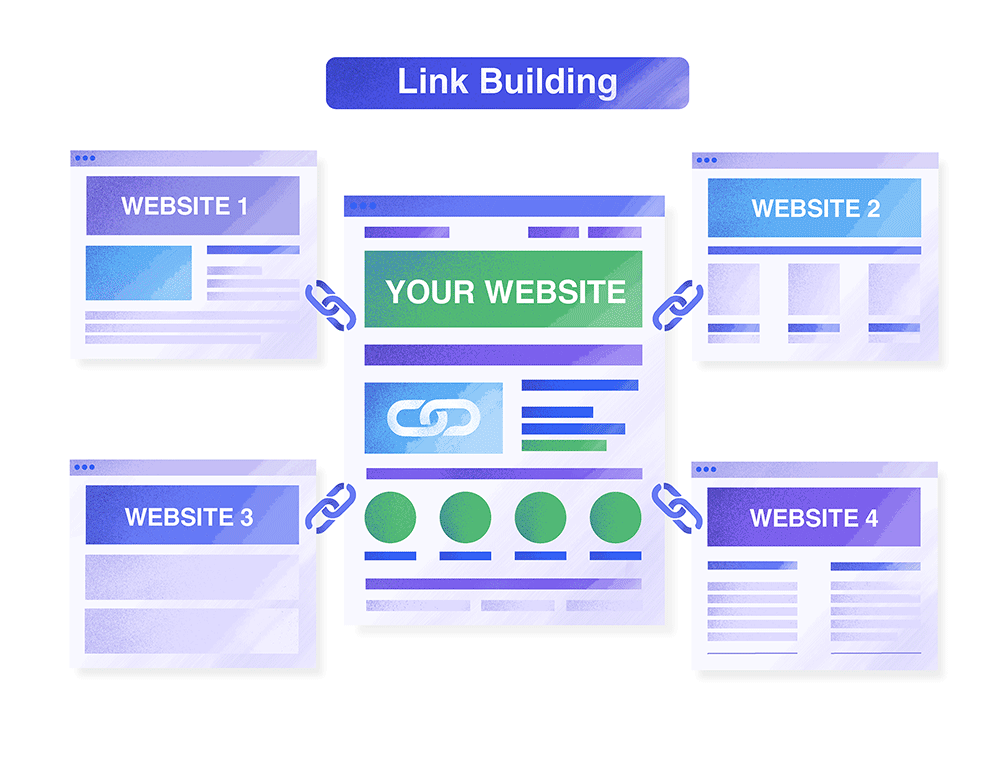
The link building process is a form of Off-Page SEO (which refers to actions taken beyond your website to improve its online visibility). Like On-Page SEO, link building directly impacts rankings and helps enhance your website’s significance to search engines. Simply put, earning links back to your pages acts like winning votes. It signals to Google that your website is worth paying attention to.
How backlink building works
The link building process (except for organic backlinks) consists of three main stages:
1. Finding a website to get a link from
⬇️
2. Getting a link to your page
⬇️
3. Waiting for site growth after some time (if done correctly)
Pay special attention to the following as you work through each stage:
- Your focus page (also called acceptor, destination): This page gets link juice from each backlink. Note that the pages you build links to should be well-optimized.
- A page with a backlink to your page (also called donor, placement). This third-party page passes value to your focus page. The pages you link to must be valuable, relevant to your business, targeted at high-converting keywords, and capable of driving organic, targeted traffic.
- Anchor text that describes your focus page in a few words. Anchor text provides context to both users and search engines and is a mediator between the acceptor and donor. This helps the crawler understand the link’s relevance. Pay attention to your anchor text profile, which should not be spammy. Use different types of anchors: commercial (buy SEO tool), brand (SE Ranking), commercial & brand (SE Ranking SEO software), generic (click here), naked (https://www.ikea.com), etc.
Why is link building important?
Following an appropriate link building procedure allows you to gain high-quality backlinks, which are fundamental to Google’s PageRank algorithm.
Getting backlinks:
- Boosts the website’s overall trust. Backlinks act as “votes” from other websites, signaling to search engines that your content is valuable and credible.
- Improves rankings. Sites with high-quality backlinks from authoritative domains are more likely to rank higher. Introduced in 1998, Google’s PageRank treats links as votes, with more citations leading to higher rankings.
- Brings in referral traffic. Backlinks drive qualified traffic to your website, especially when placed on high-traffic sites relevant to your niche. Referral traffic from trusted sources also signals to Google that your content is valuable.
- Improves brand awareness. Strategies like guest blogging, expert roundups, and interviews put your name in front of new audiences, boosting credibility and recognition.
Google’s stance on backlinks today
In 2023, Google’s Gary Illyes stated at PubCon Austin that links were no longer among the top three ranking factors. In March 2024, during the Core Algorithm Update, Google updated its spam policies to weaken the role of links in rankings. Gary Illyes later confirmed that Google doesn’t need very many links to rank web pages.
This is likely because of Google’s extensive use of AI and natural language understanding in its algorithms.
But while backlinks play a lesser role now, they’re still a ranking factor and matter for site optimization.
Link building strategies and examples
Below are some popular link building strategies among SEOs.
Creating high-quality content to get organic backlinks
An organic backlink is an inbound link naturally included in an external website’s content without your direct involvement. To attract organic backlinks, focus on creating engaging, shareable content with the potential to go viral.
For instance:
- Publish studies. The main rule here is to create hands-on, practical content for website visitors that cannot be found elsewhere. Authors often rely on data from existing research, so consider conducting your own studies and publishing unique stats and insights on your website.
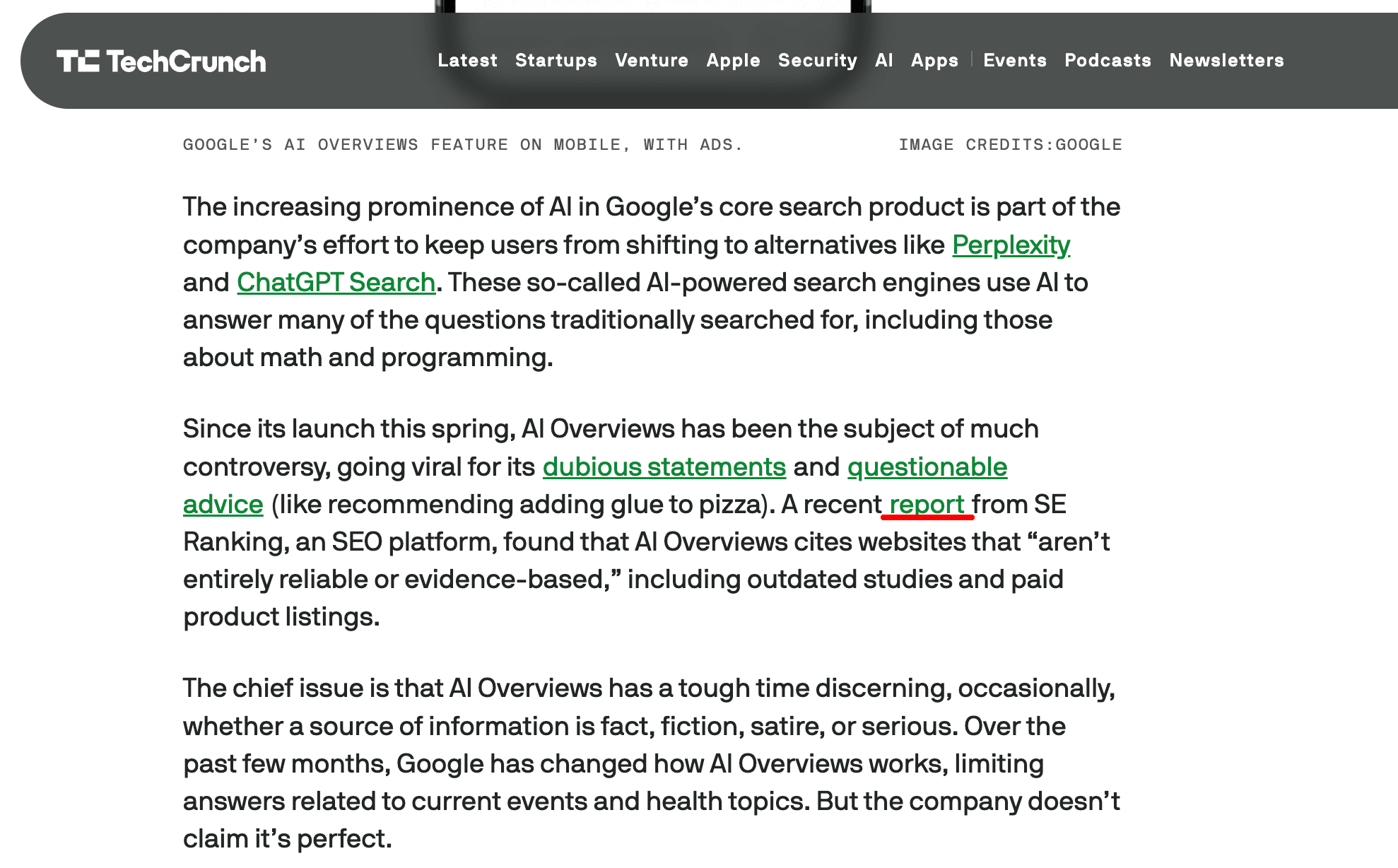
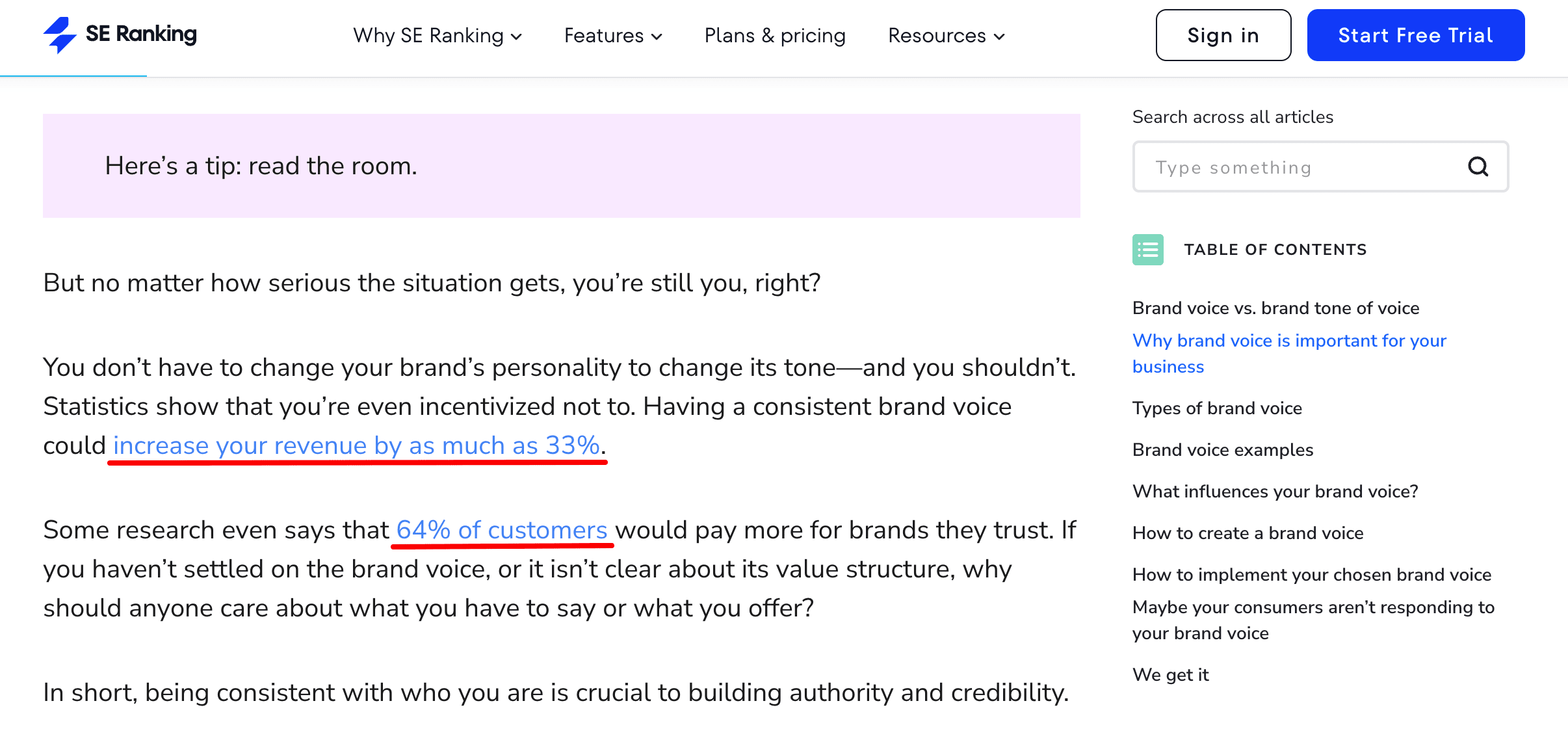
- Publish infographics. Content creators like linking back to infographics (large images with multiple facts, figures, and statistics). Users prefer looking at exciting infographics over reading long walls of text.
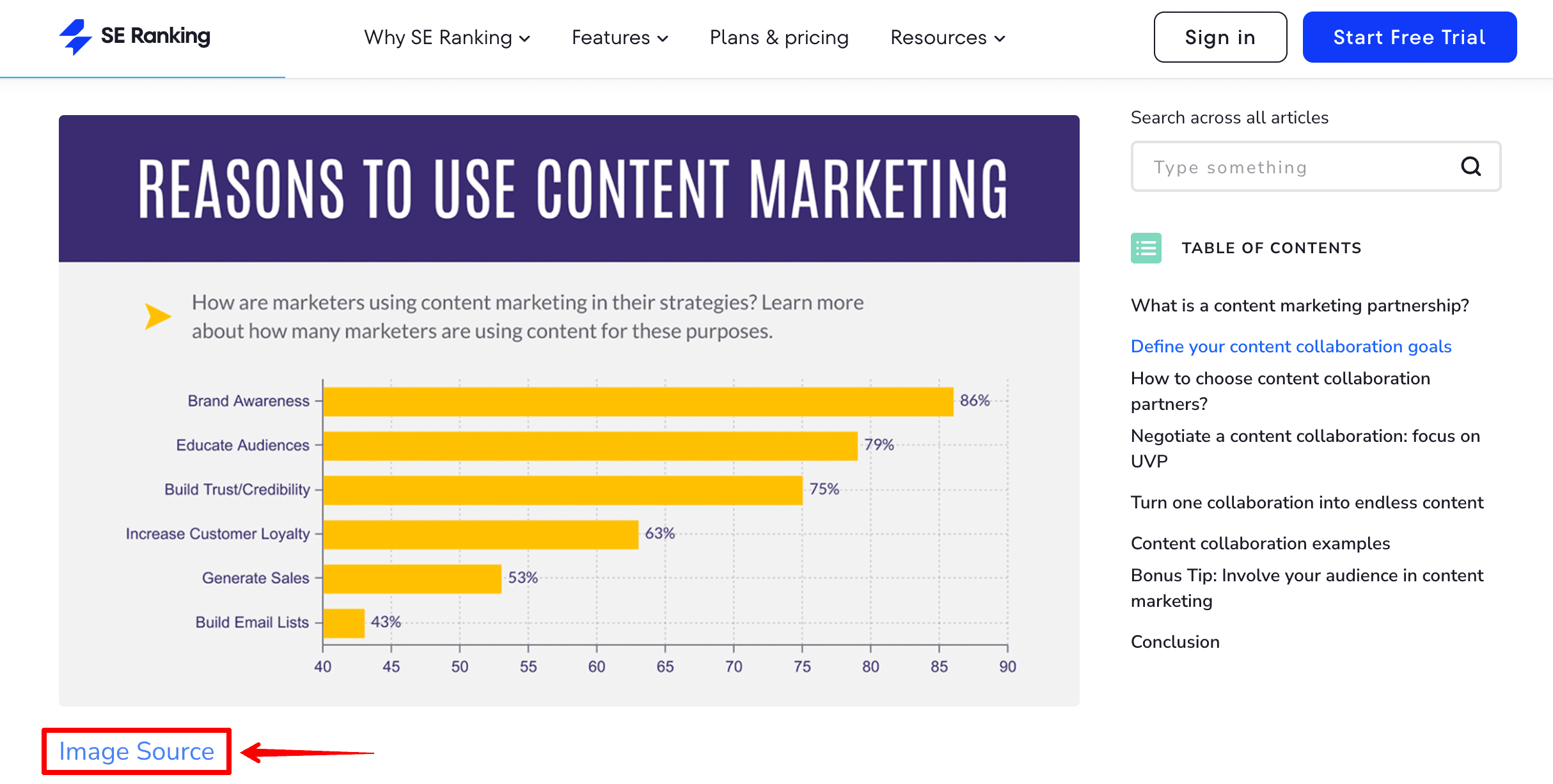
- Share interviews. Content creators support their claims with quotes from interviews with niche experts. Gather data after each interview and use it to create content with high potential for earning backlinks.
Guest blogging
Creating a blog post for another website is a great way to get backlinks. After pitching your article to a relevant website and getting it accepted, you benefit from another backlink while the other website benefits from high-quality, valuable content that includes an external link. It’s a win-win situation.
The backlinks can be added throughout the post, including in the body, bio, and other relevant sections.
The screenshot below shows our guest post for InCorp with a backlink to our website in the body text.
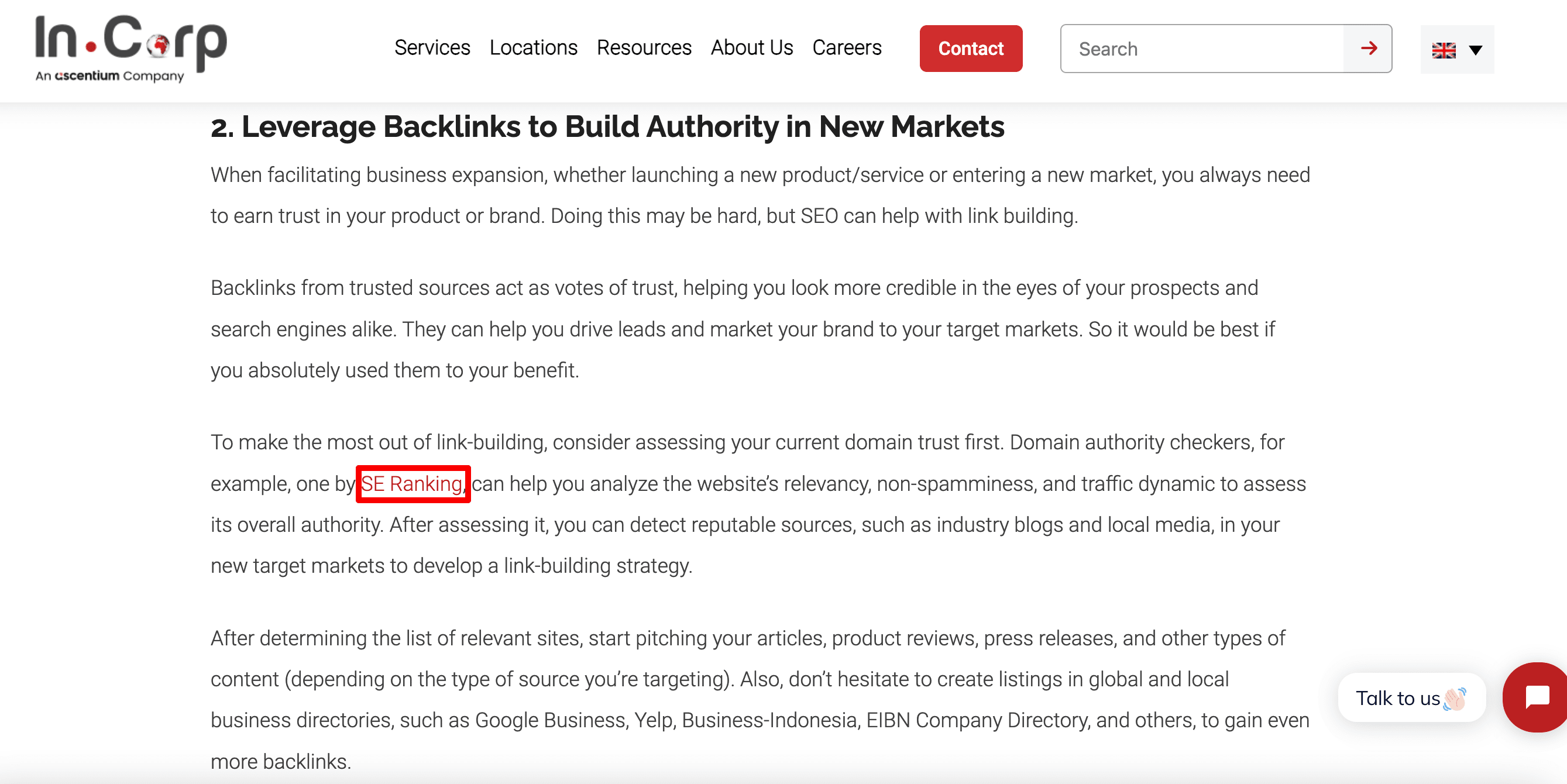
Here’s another link building example. A guest blogger placed his backlink in the bio near the body text of the guest post for Hype Journal. If a site that accepts guest blogging doesn’t allow you to insert backlinks into the content itself, it will often allow you to include backlinks in your bio as an alternative.
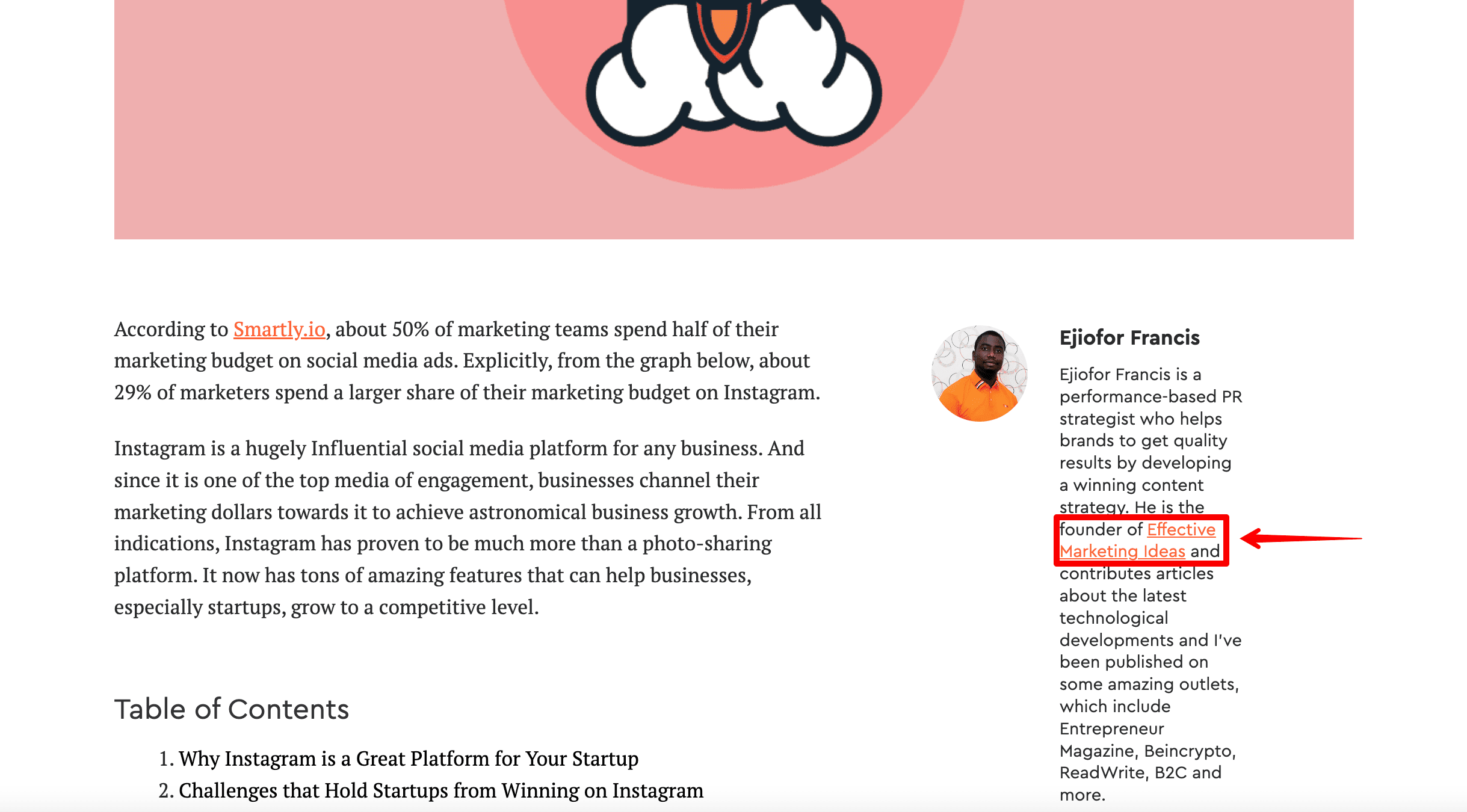
Here’s how to get guest post backlinks step by step:
- Find websites that accept guest posts.
- Refine your list.
- Develop content ideas for your pitch.
- Craft a compelling pitch email.
- Write the article with your target audience in mind.
Explore these steps even further in this guest posting guide.
Creating business profiles
Your company profile on business listing sites, catalogs, industry directories, and review sites presents an opportunity to include backlinks. This type of backlink is ideal for local businesses (restaurants, hotels, gyms, etc.) because your target audience can easily find you by location.
We’ll explain where and how to add backlinks by citing examples of the most popular platforms.
1. Create a Google Business profile of your company. Add the company’s name, photos, logo, and all other essential info. This includes your homepage URL and links to your schedule and/or menu.
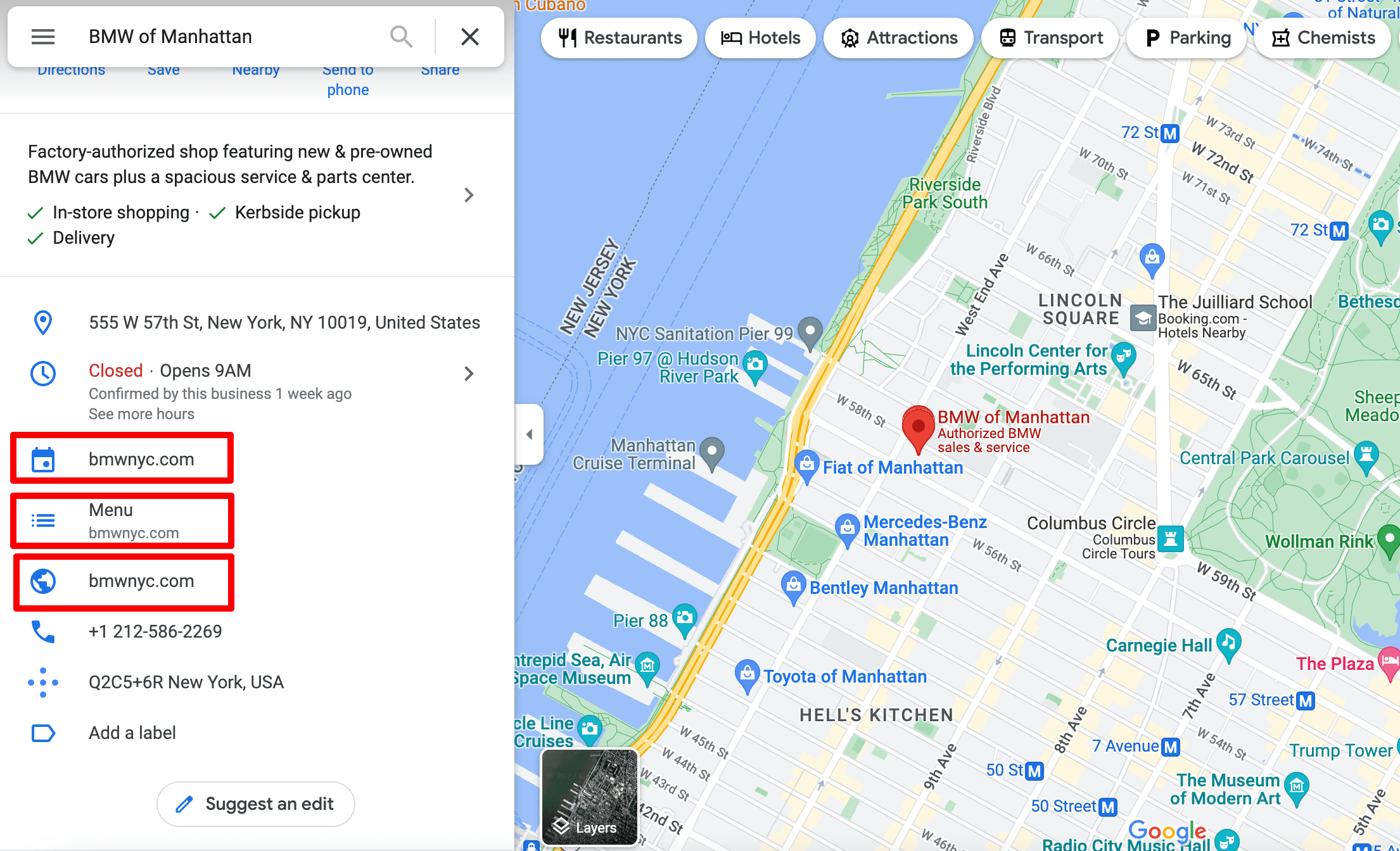
2. Get reviews on popular platforms like Yelp and TripAdvisor. Creating a profile on these platforms is much like creating one on Google Business. Add key info, including your company’s name, opening time, telephone number, and address. Don’t forget to add a link to your website.
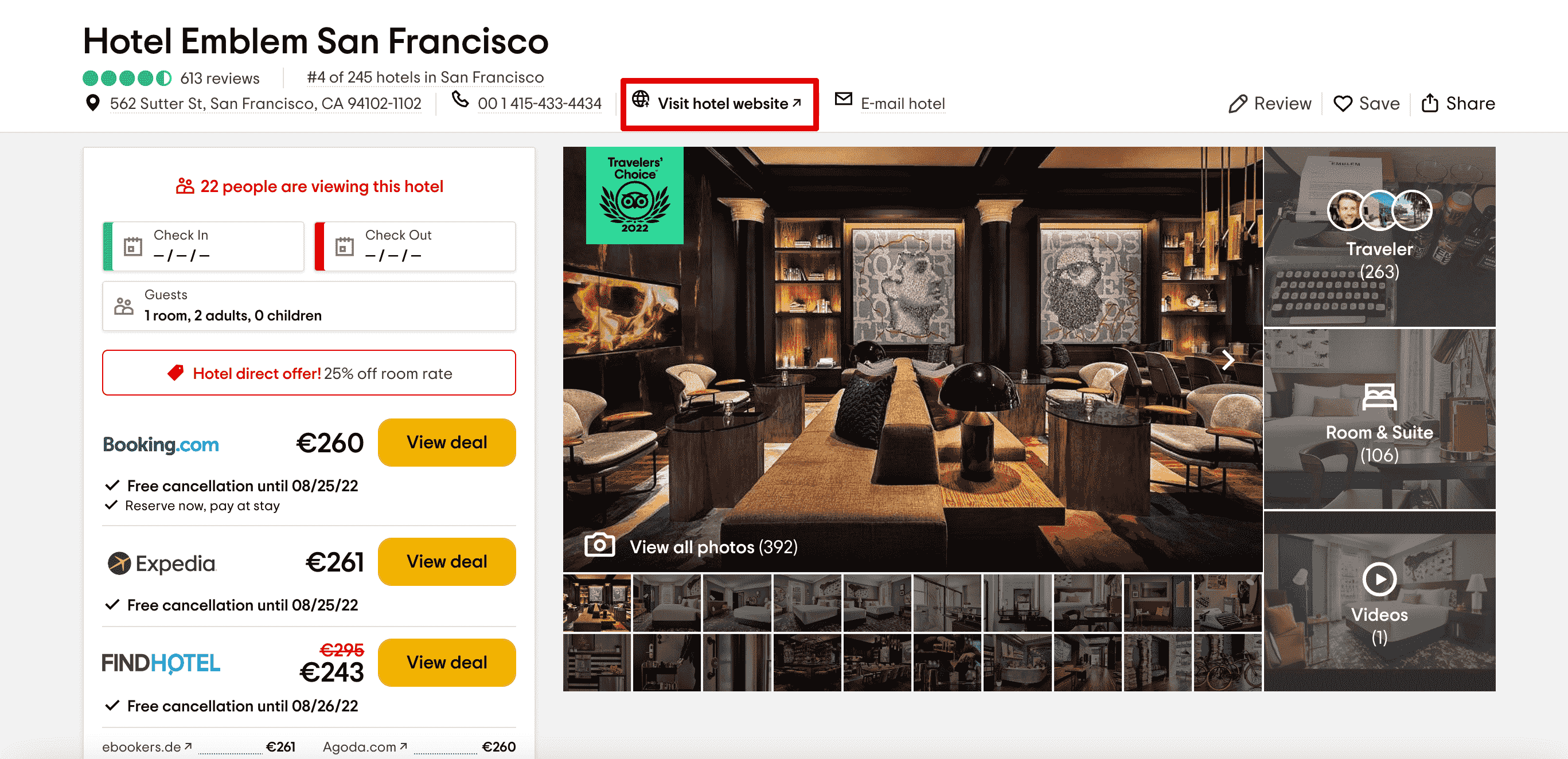
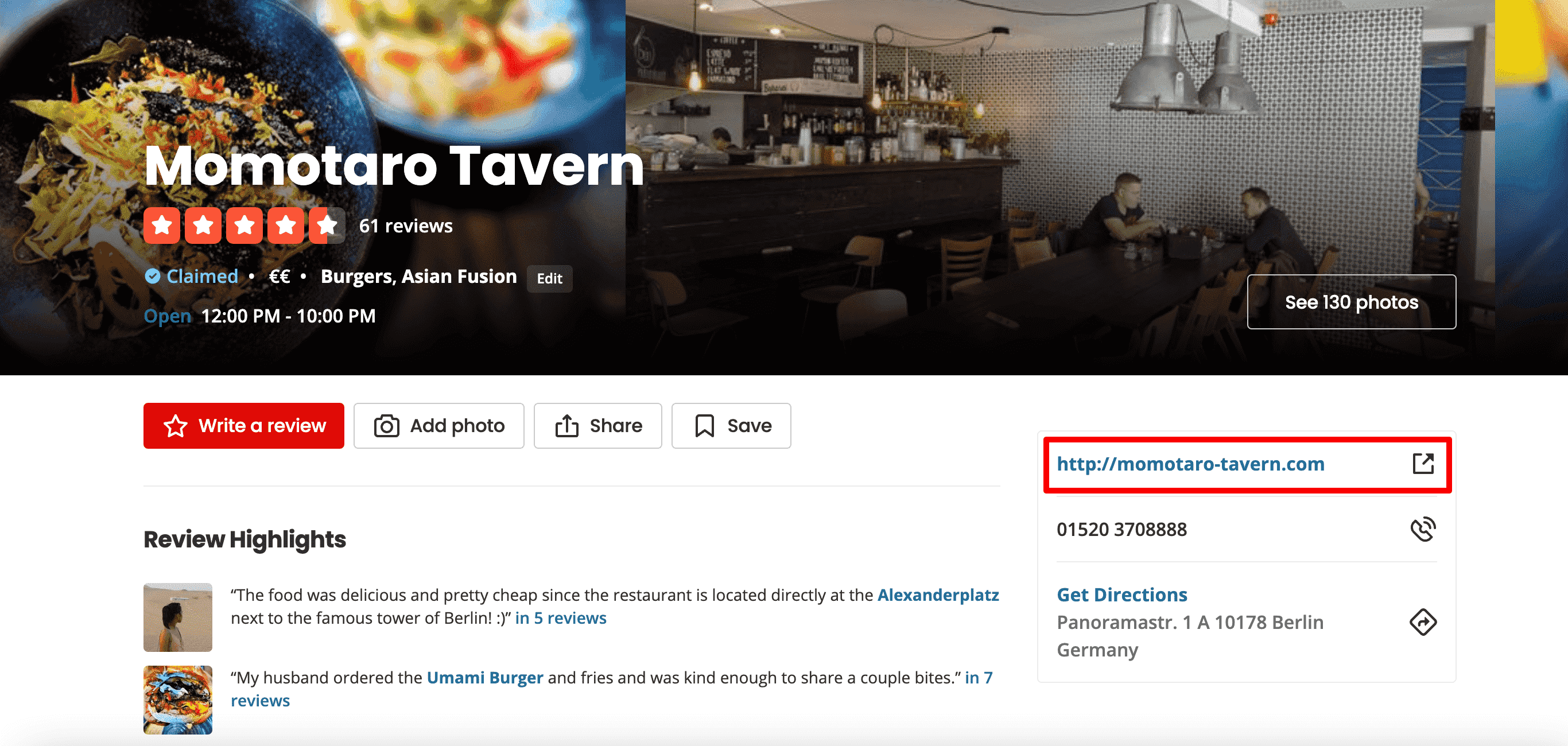
3. Look for lesser-known opportunities. This could mean leaving your company’s info on platforms like the Bizify business directory and the Callupcontact listing. Always create profiles on platforms that are appropriate to your niche.
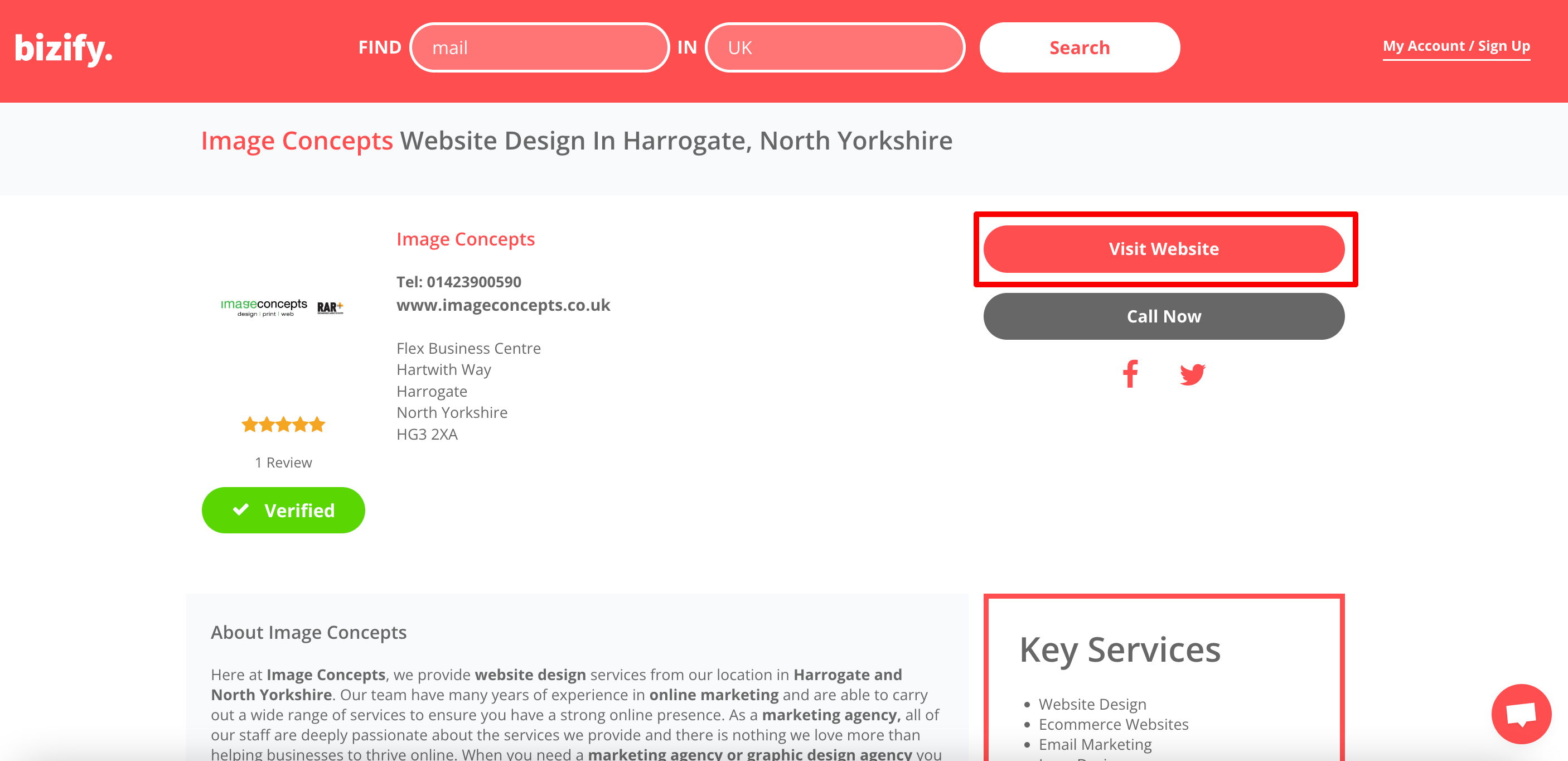
Don’t overlook any website’s quality or authority. It’s best to get backlinks from trustworthy, location-relevant domains.
Giving testimonials
Here’s how to get backlinks from testimonials in four steps:
1. Make a list of products or services in your business that you use daily. Consider how relevant they are to your niche or occupation. For example, if you use an SEO platform to promote your company’s website, you can leave a review of an SEO tool with your backlink.
2. Check for opportunities. Not every company allows customers to submit reviews directly on their website. Find out by checking the company’s contact information and writing an inquiry email to them.
3. Write a unique review. Create a genuine, personable review. Don’t forget to include your business’s name and website URL.
4. Build rapport, and don’t limit yourself to just one relationship. Show your gratitude by sharing a review on your social media channels and tagging the company in it.
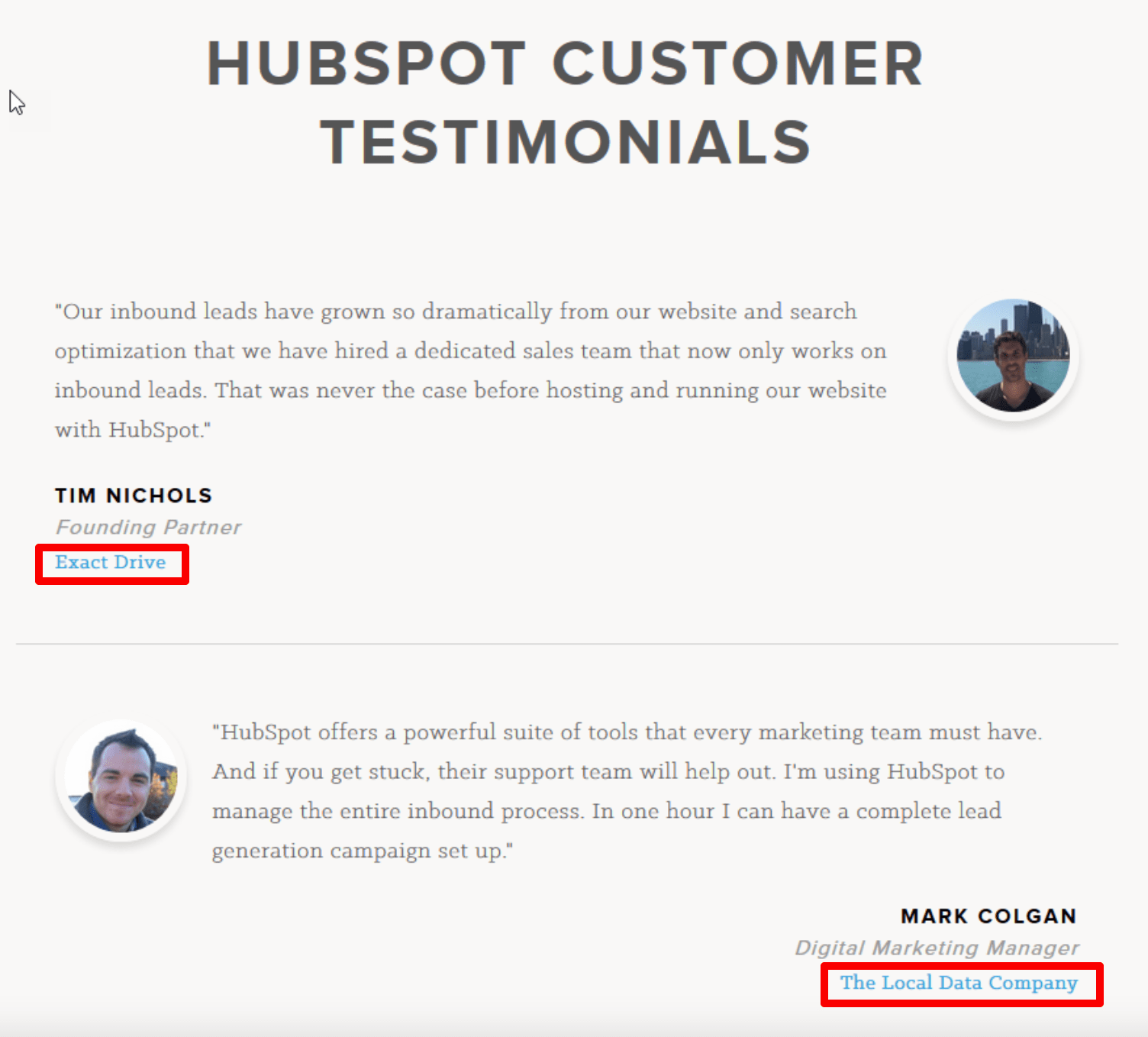
Getting backlinks from forums, question-and-answer websites, and comments
You can also add links to your pages in forums, Q&A websites, and comments written by users. Quora and Reddit are among the most popular forums and Q&A websites.
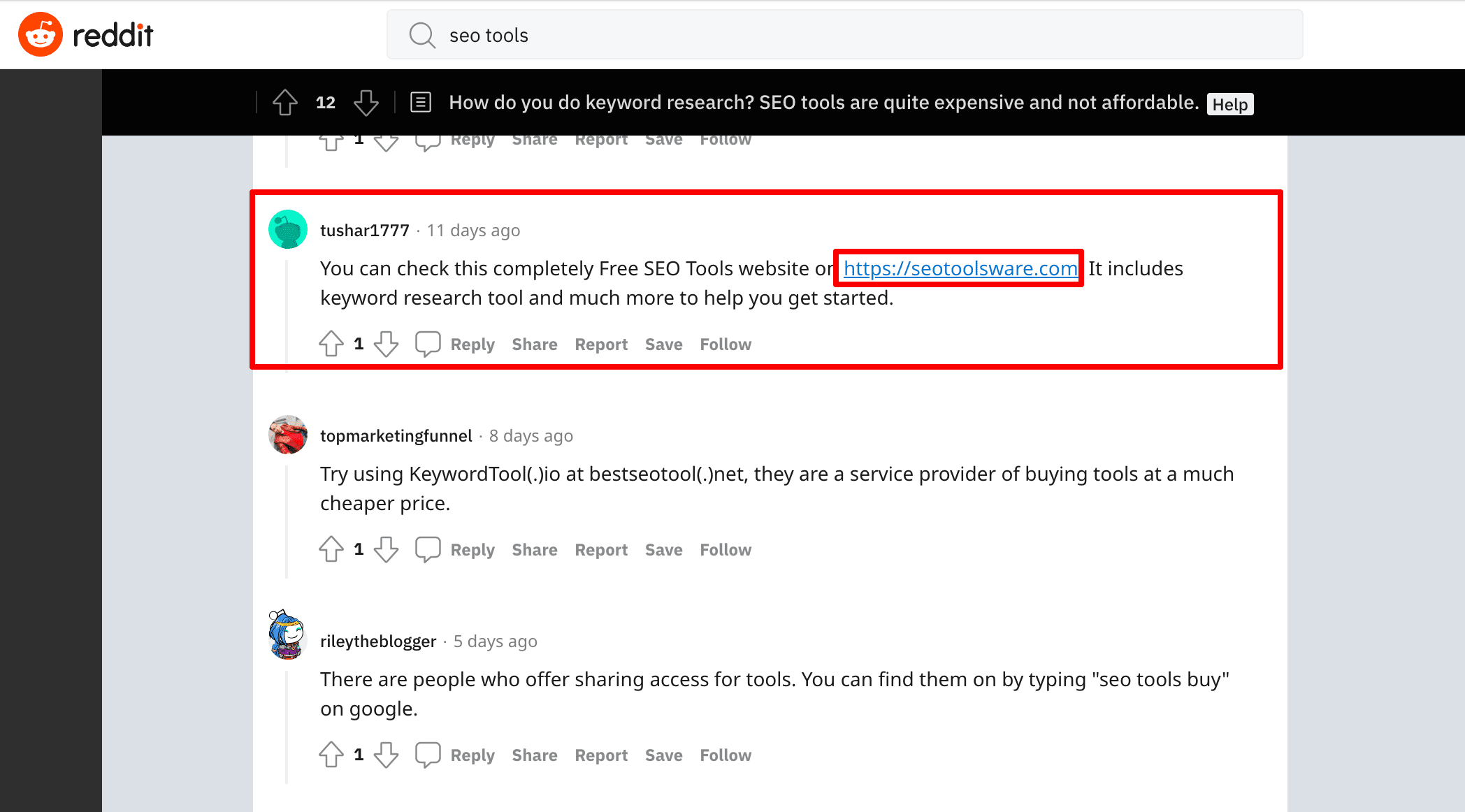
Find topics relevant to your niche and respond to questions by linking to the most appropriate page on your site. This page should address the topic of the thread, as shown in the examples above and below.
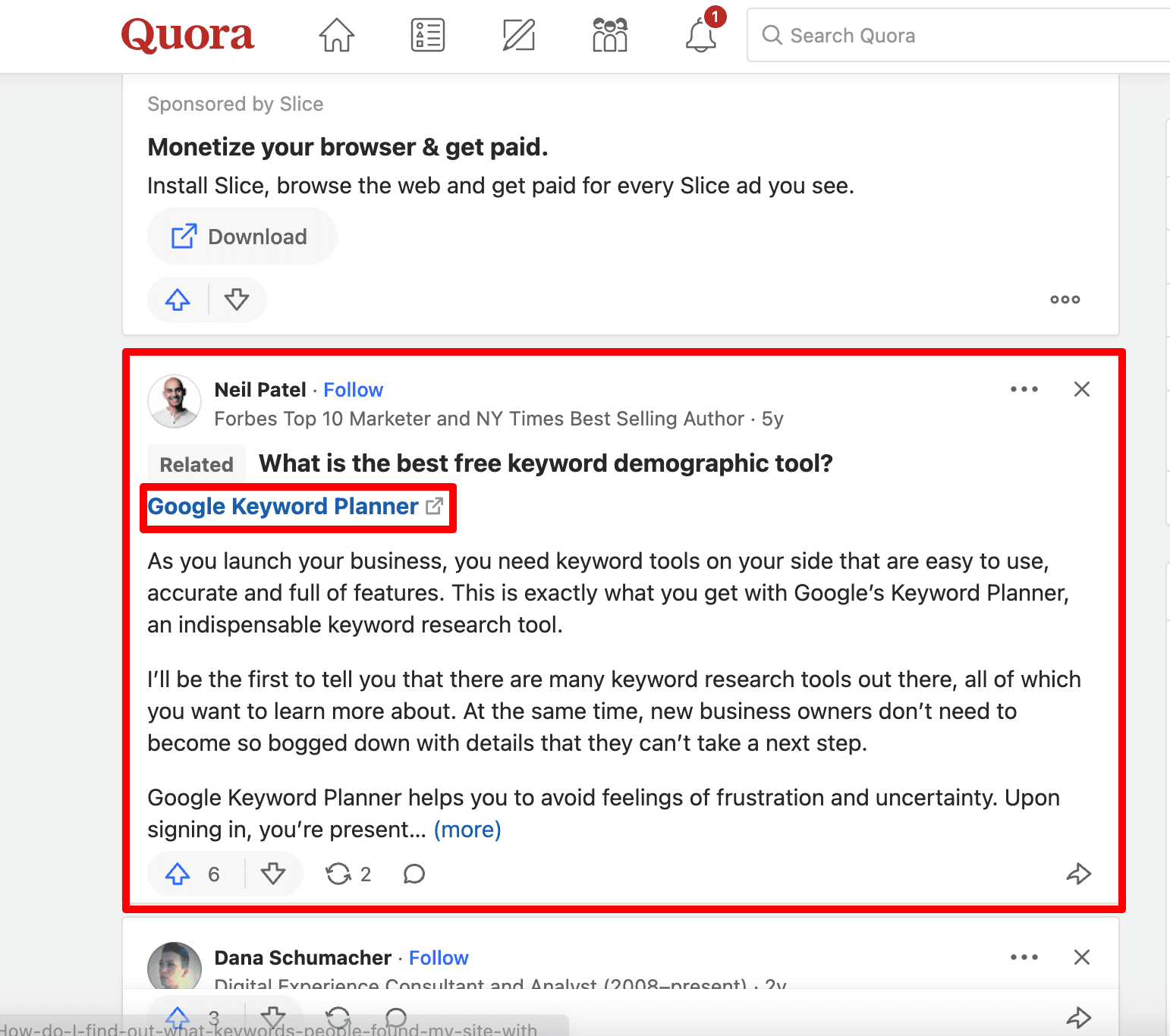
Give straightforward, detailed answers to these questions. Also, be careful not to spam your responses (both users and search engines will appreciate it). Responding to questions on Quora in a spammy way will hurt your reputation with both Quorans and search engines. Personalize your answers and focus on establishing rapport with people on Quora.
Some SEOs even add target keywords to their answers to create relevant semantic environments for their backlinks.
Adding backlinks in podcasts, videos, and webinars
Consider adding your link to landing pages of your (or somebody else’s) webinar, using them to present yourself as a niche expert.
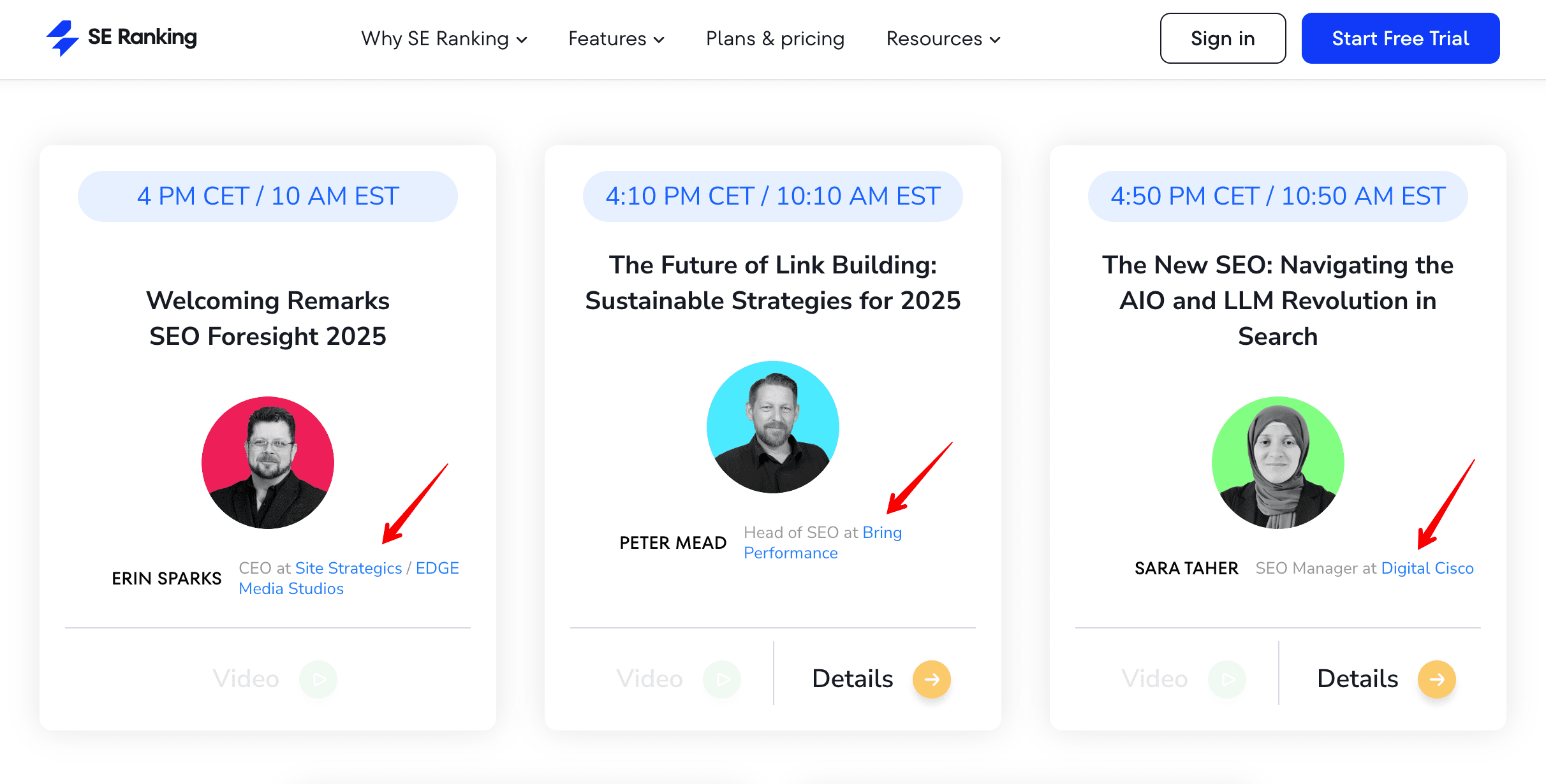
This approach is also useful when mentioning your website on video-sharing platforms like YouTube. Conduct an interview or co-host a workshop in exchange for a backlink in your partners’ video or stream description.
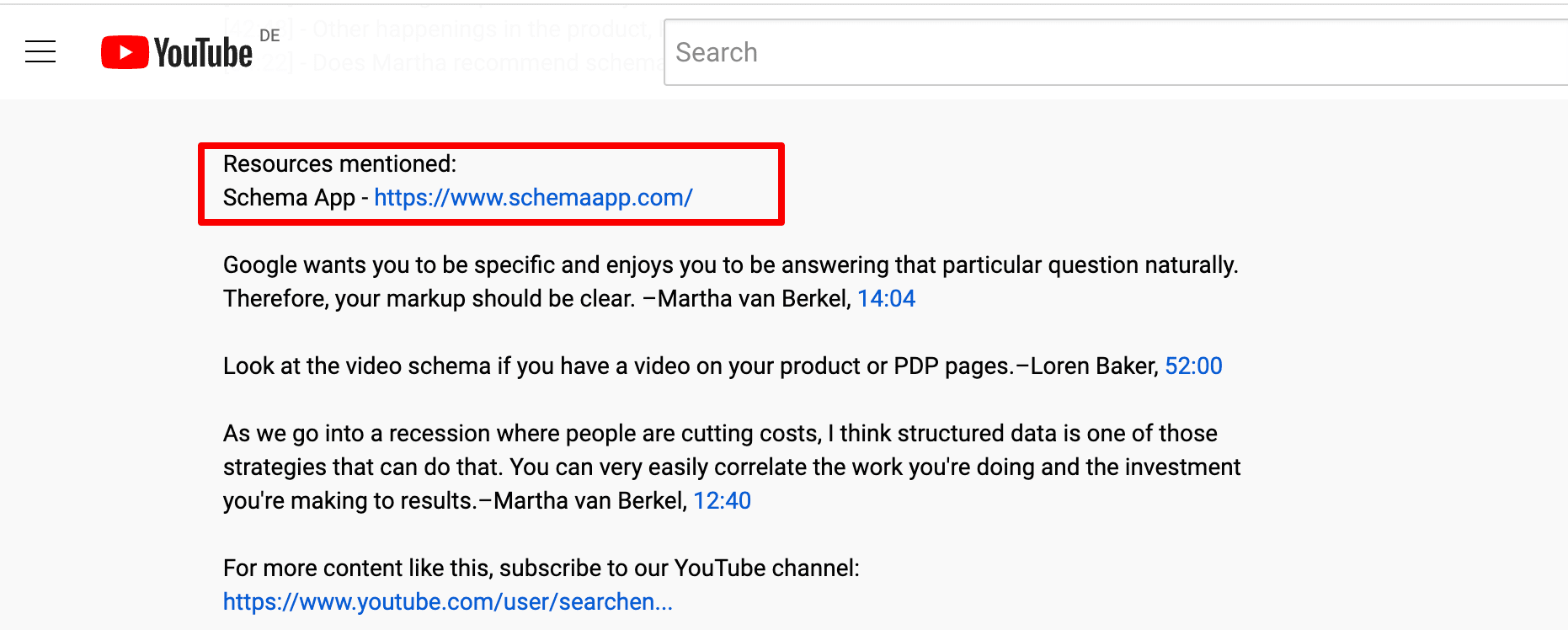
Getting clients’ backlinks
Another strategy is to receive links from your clients in exchange for your services (e.g., website development, web design, server hosting).
Think about which services you can offer the company/brand that would merit a backlink from them. For example, maybe you’re a web studio business and you’re offering to revamp your client’s website design at a discounted price.
These backlinks are usually added in the footer, as seen in the screenshot below.
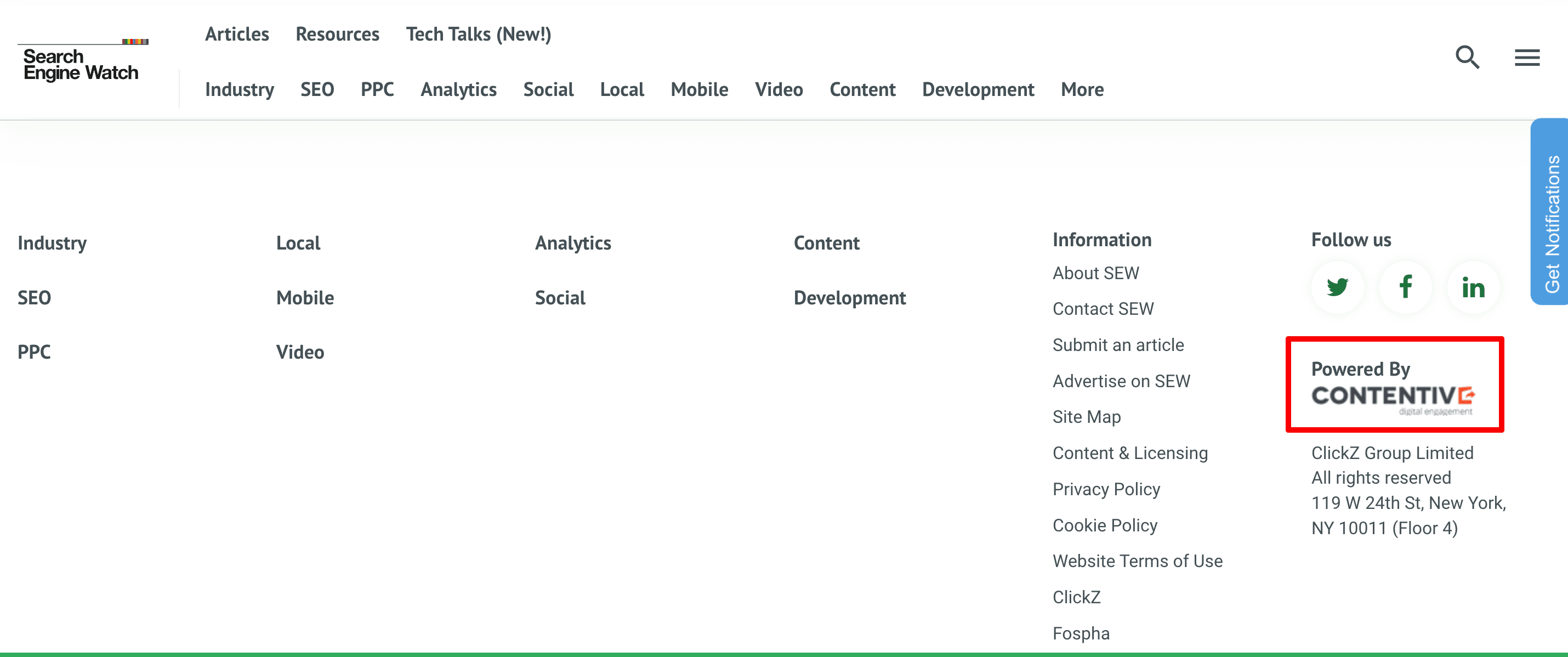
Note that you don’t necessarily have to provide web design or development services to use this link building method. You can also ask your customers to add links to your product on their websites. For instance, you can provide discounts to your clients on their next subscription to encourage them to leave a backlink.
But keep in mind! According to Google, exchanging goods or services for links is considered link spam when done without discernment. Google can easily tell if you’re trying to cheat its algorithm, so make sure partnerships like these are genuine, useful, and never forced.
Purchasing sponsored backlinks
Sponsored links are essentially paid links, and you can pay a third-party domain for backlinks in addition to the various free methods available. Paid links include those on paid guest posts, press releases, news articles, sidebar or homepage banners, footer links, etc. Here are a few examples:
- A backlink in the body text of the blog post with a sponsored attribute
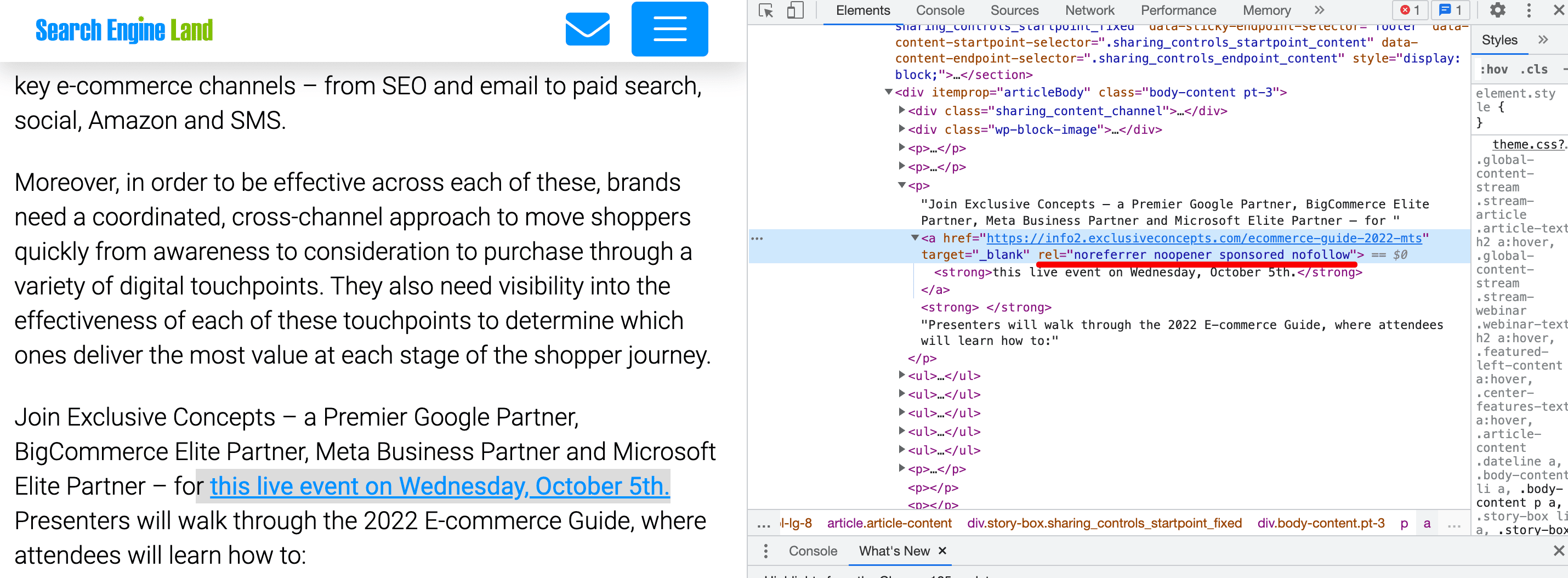
- A sidebar ad
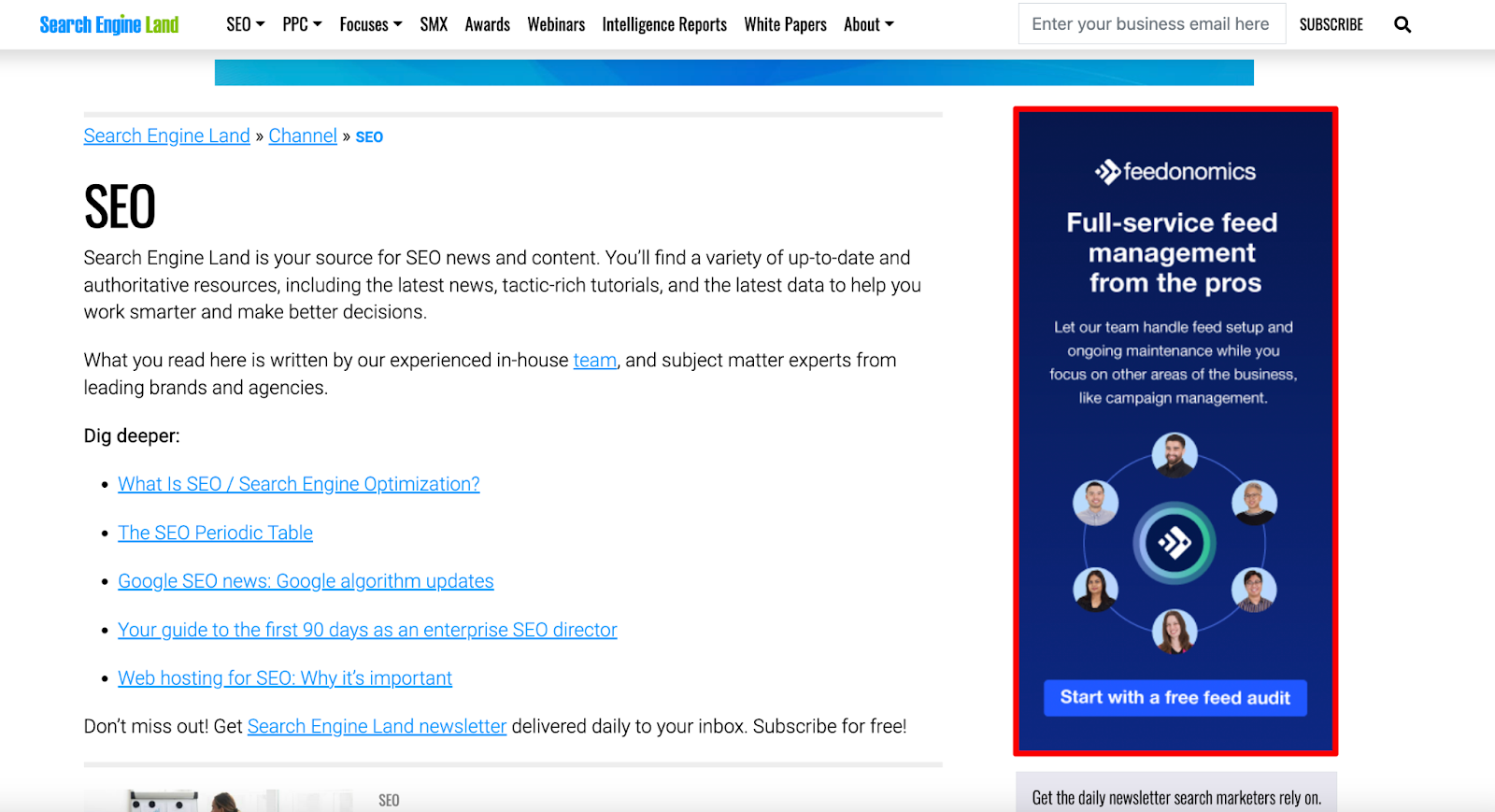
- Links to partner websites in the footer
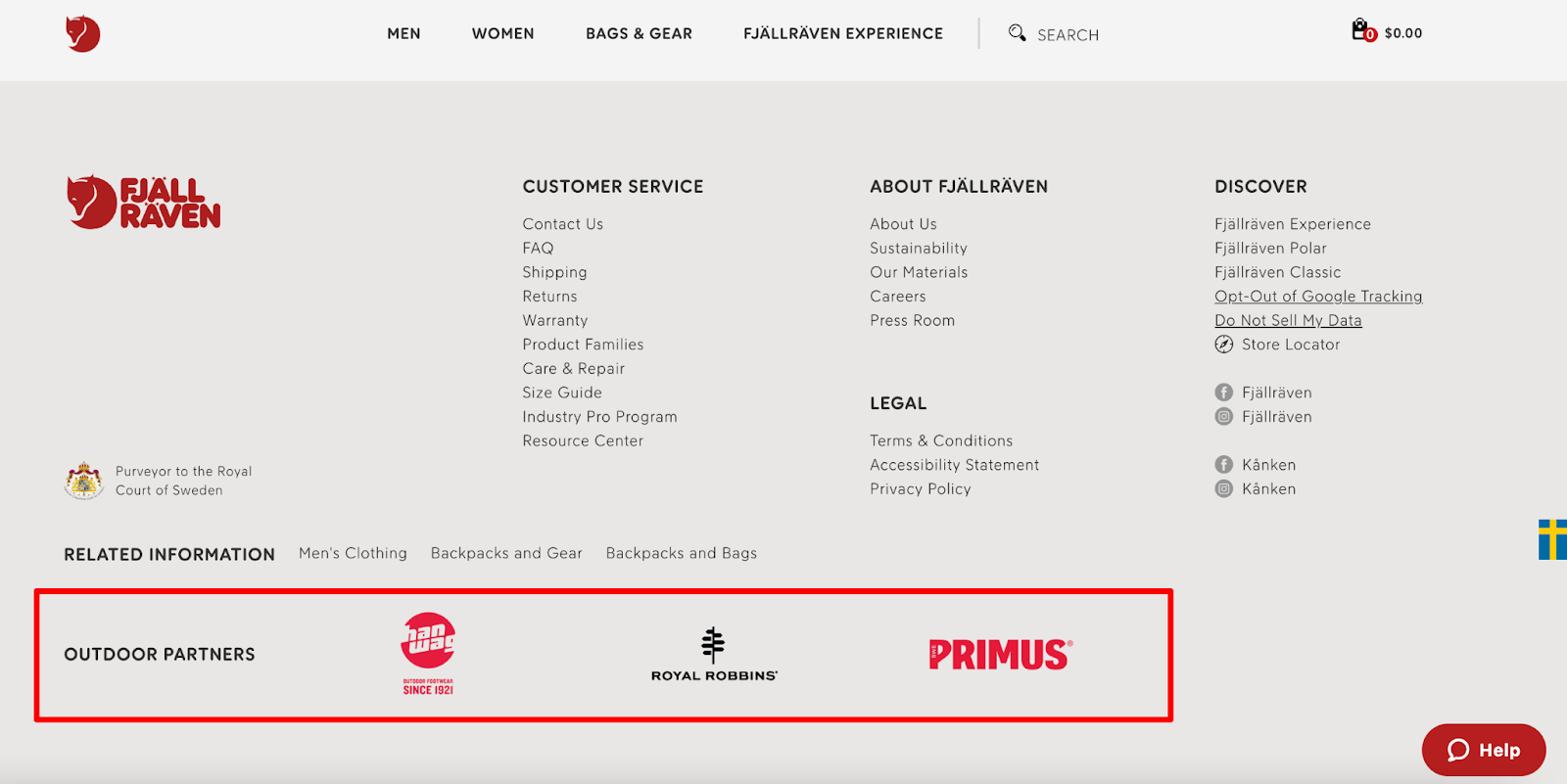
- Header banner
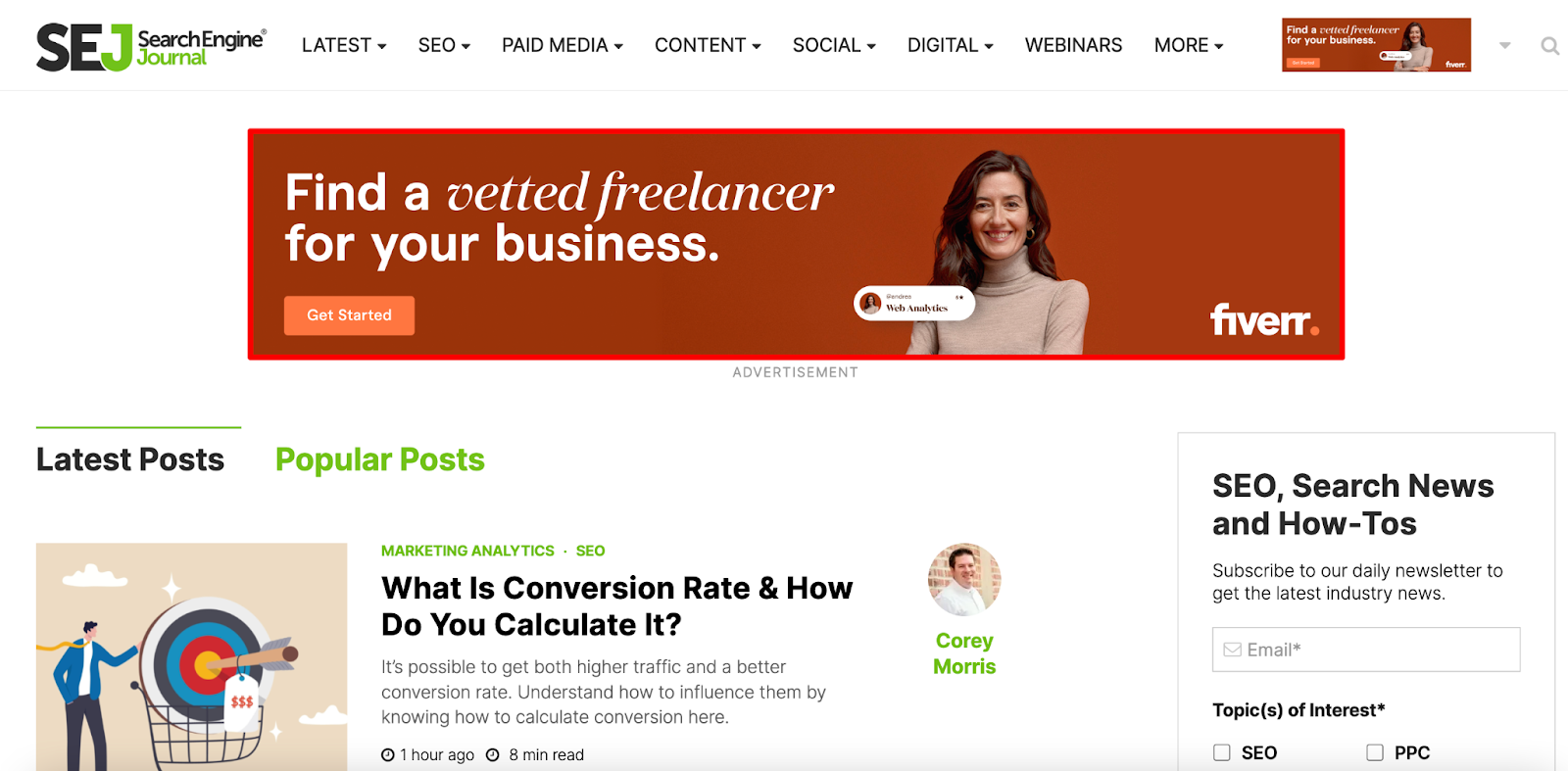
As in the example above, you would be contacting a high-quality website to see if it can add your sponsored link to their homepage, footer or sidebar for an additional fee. If needed, you could prepare an attention-grabbing banner or valuable text to accompany the link.
Keep in mind! Google says buying or selling links to manipulate search results violates their Guidelines. Google recommends specifying that the links were purchased for advertising by adding rel=”sponsored” attribute to the <a> tag. It also suggests redirecting the links to an intermediate page and blocking that page from search engines with a robots.txt file. Otherwise, Google will mark you for a link scheme (aka link spam) action.
This suggests that sponsored links are more useful for brand awareness and referral traffic than for actual link juice.
Collaborating with affiliate marketers
An affiliate link is a unique link that contains the affiliate marketer’s ID, which is considered unique information for tracking. You can generate additional sales with affiliate backlinks that promote your company.
Whoever is in charge of the link promotes it across their online channels. For instance, they might share it on their blogs and social media platforms (e.g., Facebook, YouTube, Instagram).
Affiliate links are generally included in text, images, and video descriptions. You can include them in product reviews (screenshot 1), as one-time mentions in blog posts, detailed company comparisons (screenshot 2), etc.
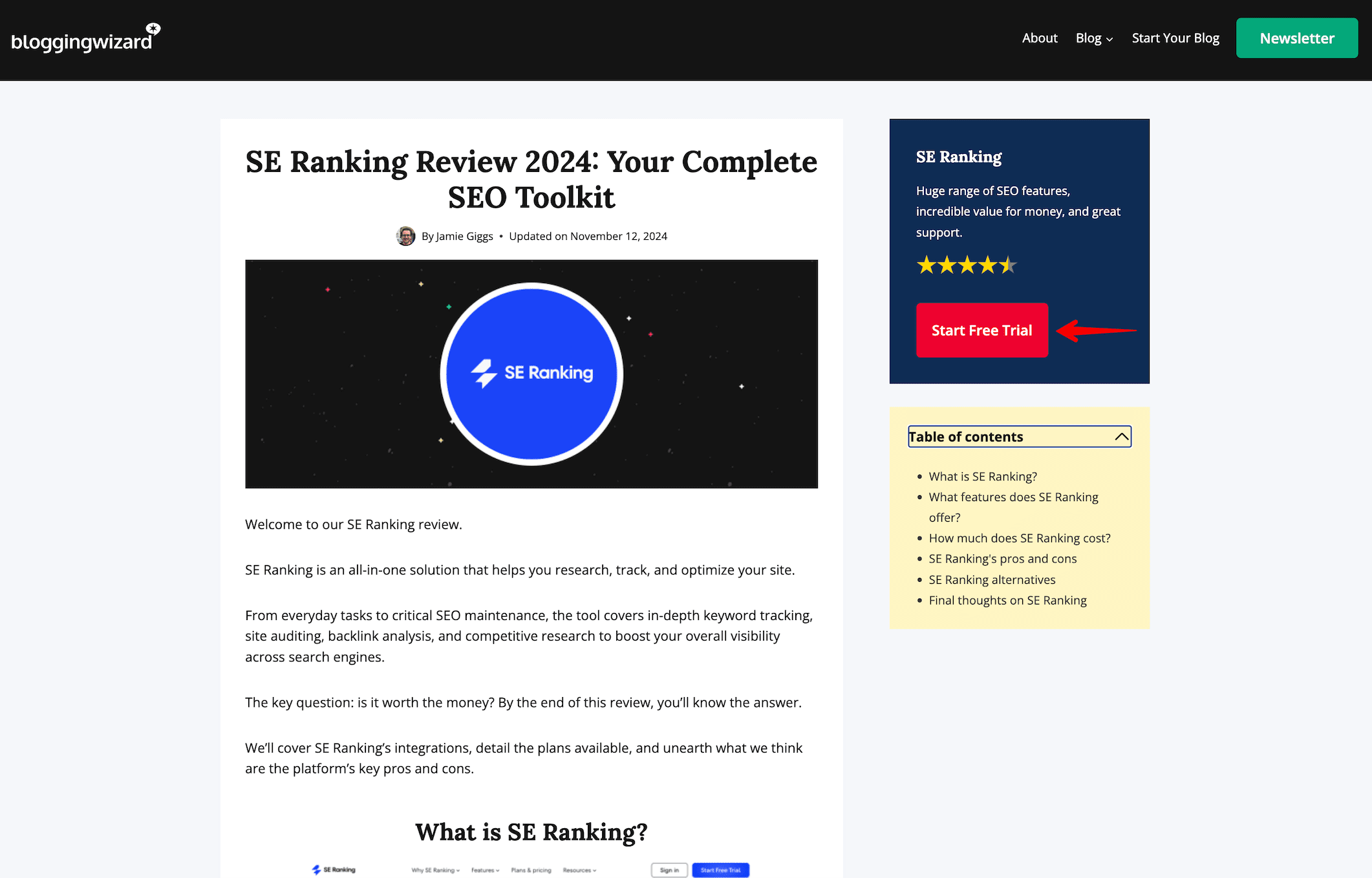
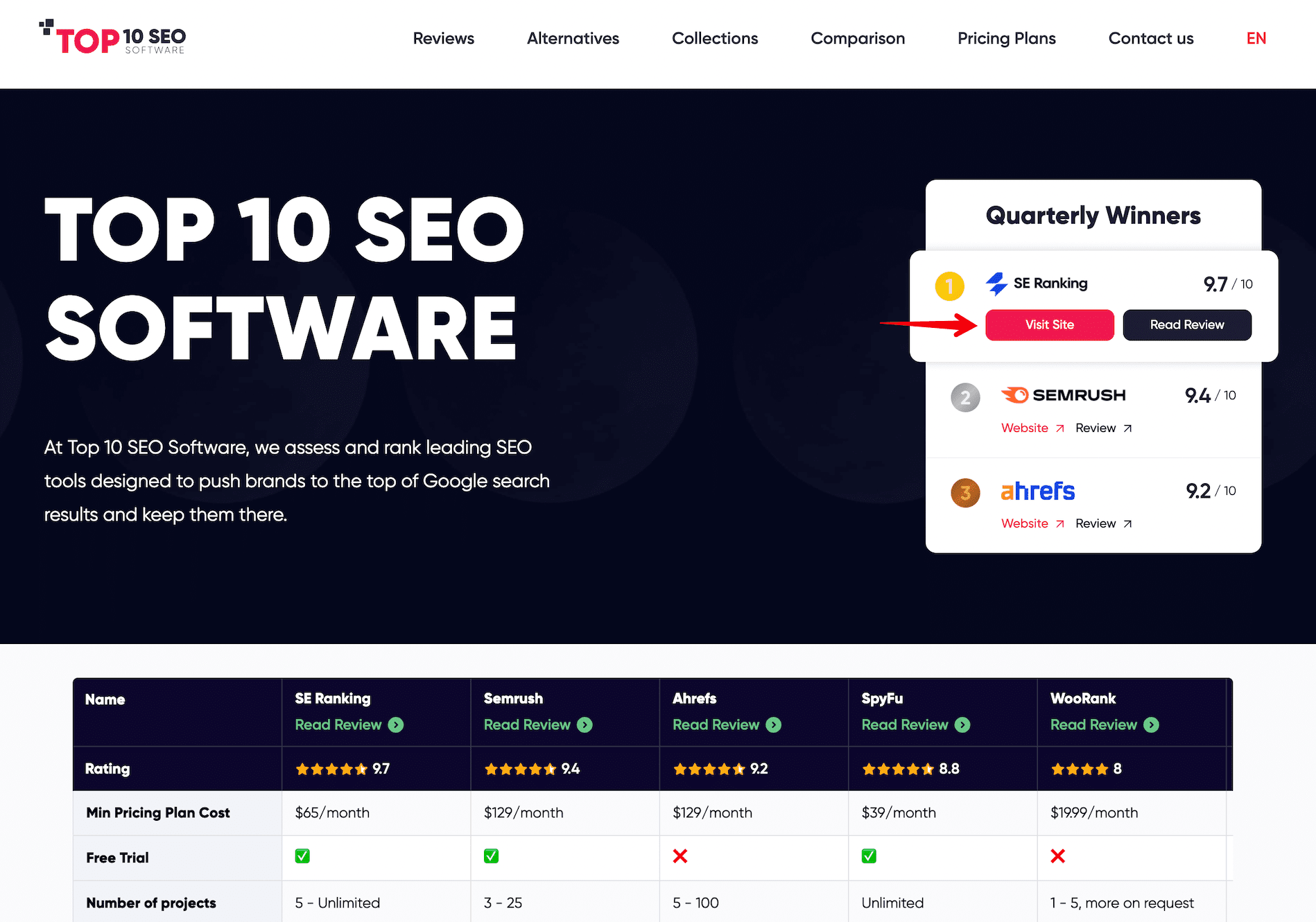
Consider starting an affiliate program on your own. Think about how much you will pay your affiliates (and what for), create a separate landing page, and look for blogs that may be willing to collaborate with you.
For instance, as part of SE Ranking’s affiliate program, we have a unique link that takes visitors to our subscription signup page. We offer affiliate marketers a 30% lifetime commission from every subscription sale.
Keep in mind! Affiliate backlinks aren’t considered ‘organic’ links. Use the nofollow or sponsored attribute to avoid penalties from Google.
Adding link insertions
Link insertion involves adding a relevant link from your website to existing content on another site. To secure this type of backlink, identify pages where your link fits naturally. Then, contact the website owners with a well-crafted pitch explaining how your link adds value to their content.
For example, if your brand specializes in fitness equipment and you discover a blog post about creating a home gym, you could make a proposition to the site owner that explains how adding your link would improve the article (more/better insights, product recommendations, etc).
Replicating competitor links
This backlink strategy involves finding the dead backlinks on your competitors’ websites and replacing them with links to your content. Start by selecting a competitor with a strong backlink profile and identifying their broken links. Then, focus on the referring pages that generate the most traffic. Next, choose or create content with the potential to replace the dead backlink. Finally, contact the website owners and request that they update the old link with yours.
SE Ranking’s Broken Backlink Checker makes this process easy. All you have to do is access the Backlink Checker tool, enter your competitor’s domain, and hit Search. In the report, click on the number of broken backlinks to view the complete list, including details like the link’s referring pages, target URLs, traffic, toxicity scores, and more.
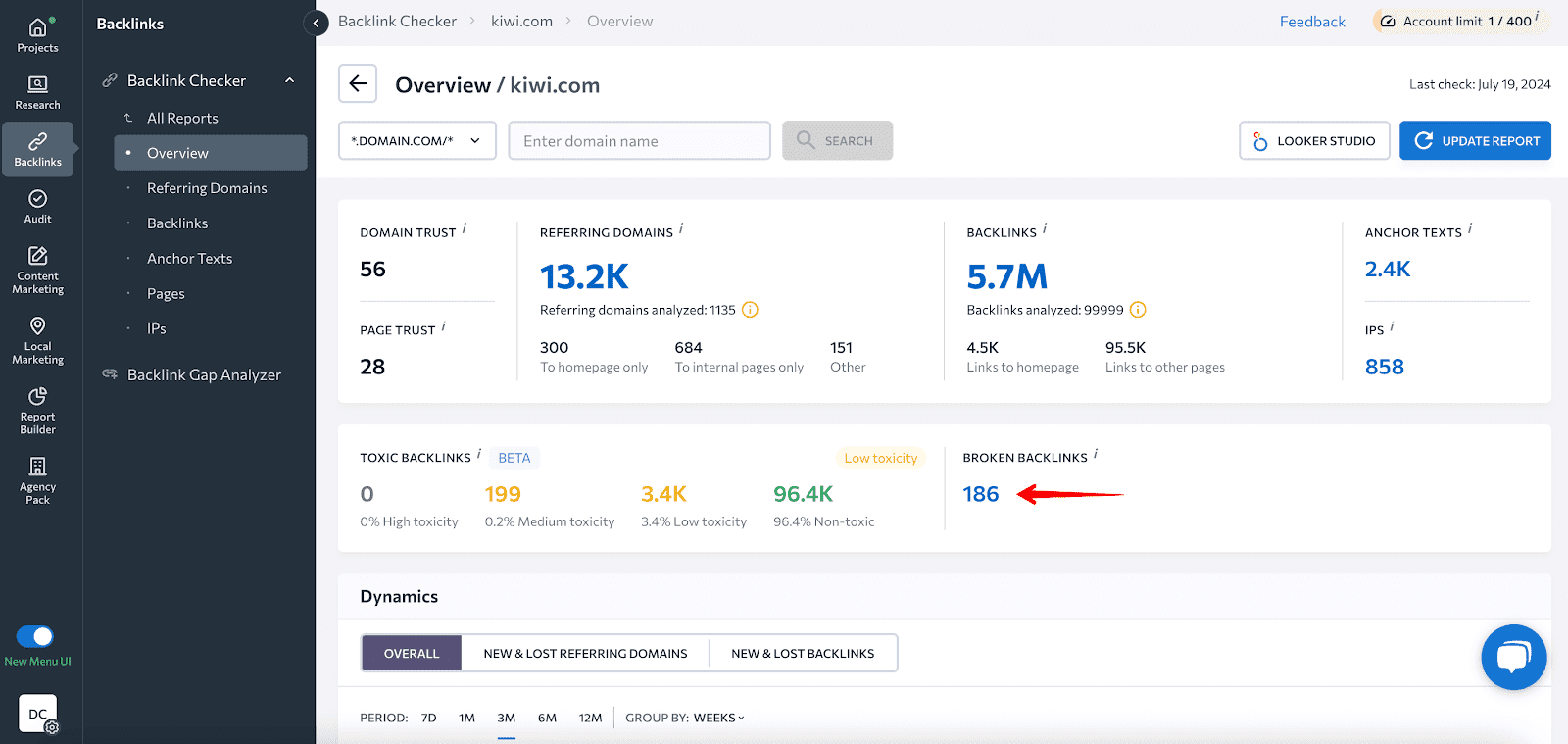
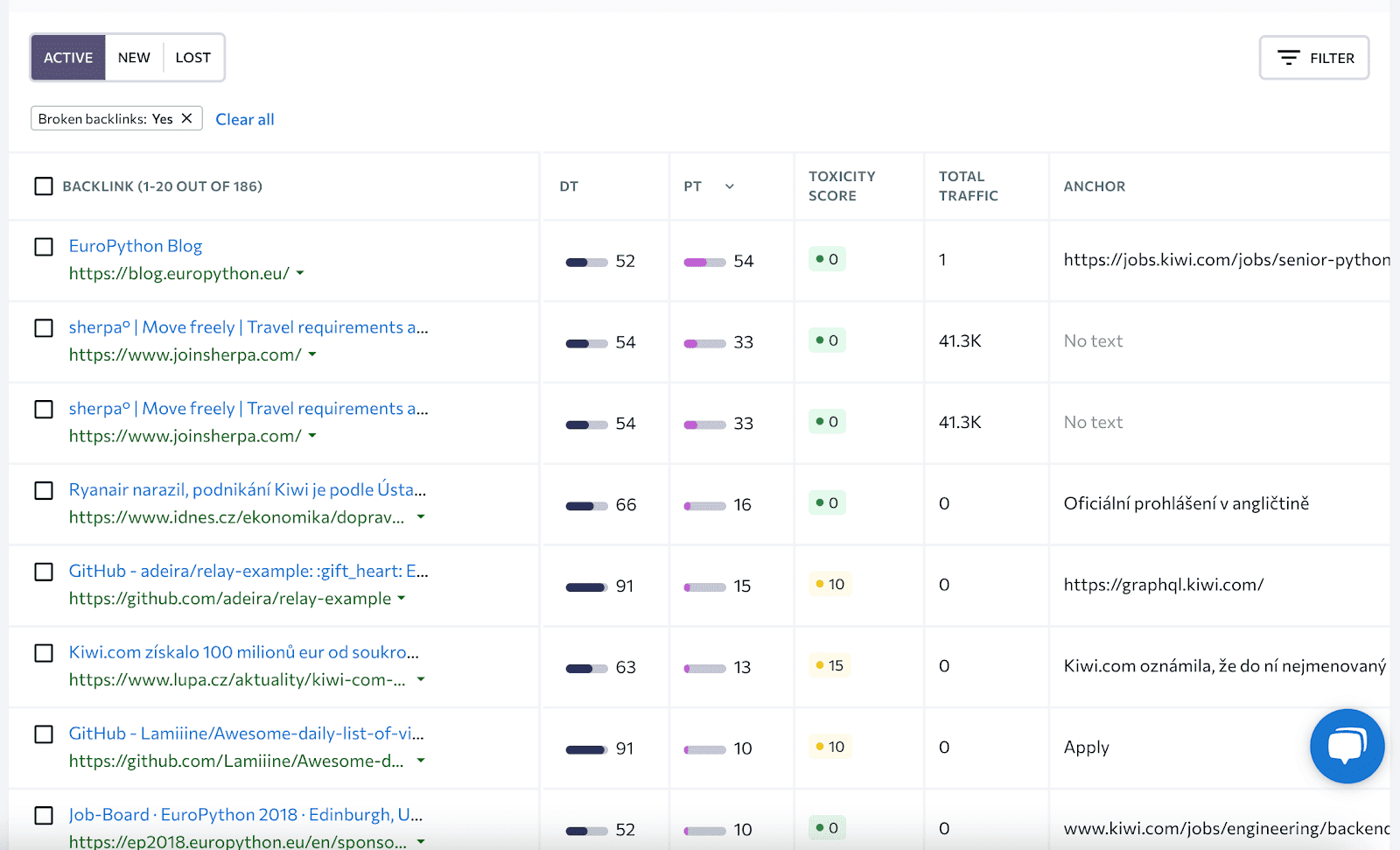
Tip: Don’t just aim for more links, aim for links from different websites. A single domain linking to you 10 times doesn’t have the same impact as 10 domains linking once each. Learn how to grow this metric in our referring domains guide.
Conclusion
Link building is a powerful way to boost your website’s visibility, attract the right audience, and build trust with both search engines and users. While Google’s algorithms have changed over time, quality backlinks are still important for SEO.
To succeed in link building, focus on quality over quantity, and use proven strategies that secure high-authority, relevant backlinks. Create guest post content with authentic value to users, add backlinks to business profiles, give testimonials, and take advantage of linking opportunities in forums, podcasts, and video platforms.

